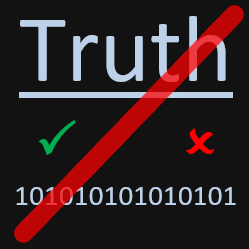Truth, Identity, Intelligence, Trust (12/22)

‘Deep learning’ is not the latest education fad with the lifespan of a government minister.
The deep learning described here is the name of a ‘new’ technology with significant impact, for better or for worse.
Beyond theory and context, real-world usage is highlighted.
The world, and its technology, can control too much of our lives. Once grasped this post offers reassurance to Christians in relation to truth, intelligence, identity, and trust.
Deep Learning: Theory and context.
There is more hype and misinformation about deep learning than there is in politics, advertising, and social media. I am therefore using written extracts and knowledge from my nephew who has a PhD in designing hardware for simulating biologically plausible neural networks. Even he, does not claim to be an expert in deep learning. Who is?
Intelligence
Good teachers have always known there are multiple intelligences. Artificial Intelligence (AI) in action can result in outcomes indistinguishable from those generated biologically.
AI is a field in which people try to build systems that mechanise processes which might in some way be perceived as ‘intelligent’. The system itself need not actually be ‘intelligent’ or even resemble human processes. Artificial General Intelligence (AGI), such as the android in films, is not here. Yet!
The Babbage mechanical analytical engine was once labelled intelligent, with numbers represented by gear wheels. However, in 1997 IBM’s Deep Blue’s chess victory against Garry Kasparov is now casually dismissed as, ‘just game theory in action.’
AI is used everywhere from finance to military strategy.
Can machines learn?
The use of vocabulary describing biological learning is unhelpfully intermingled with the language used for the technology. ‘Deep learning’ builds upon a previous ‘machine learning’ technique misleadingly named ‘Artificial Neural Networks’ (ANNs), a technique predating the name ‘machine learning’ itself.
The ‘neural’ analogy in ANNs come from the way that biological neurons take a collection of input signals and combine them in some simple, but somewhat arbitrary manner, to produce a new output signal. I have found neuroscience study following brain injury quite complex.
In an ANN, an input, such as the pixel values of an image, may be fed into a bunch of artificial ‘neurons’ where each ‘neuron’ will combine those values to produce a new output value. Mathematics everywhere, with or without the gear wheels.
It turns out that when presented with extraordinarily large quantities of data, deep networks can pick up on remarkably subtle and infrequent patterns and do so rather robustly. This means that if you can collect a large enough corpus of training data, you can potentially create a model with remarkably sophisticated abilities.
‘Big data’ is not a large memory stick and a personal computer. There is a lot of data, including personal human data such as texts, images, sound and video in storage. With big data, we’re talking about tweaking billions of parameters and trillions of items of training data from an infinite variety of sources from the web and beyond.
At present monstrous specialised devices, often called ‘tensor’ processors, exist. Raw costs of the electricity alone mean ‘training’ some cutting-edge models has cost tens of millions of dollars!
Emerging models don’t ‘learn’ more after training. They have significant limitations and can’t undertake or manage even the most basic of tasks outside of the model, despite amazing outputs that relate to the mathematical analysis of their training data.
Deep Learning: Significant real-world usage
‘Deepfakes’ Who are you really communicating with? Images and video manipulation such as automated photorealistic face-swapping has developed to include support for face-swapping on videos, and even real-time video processing.
Automated response. We all experience automated responses when trying to get help, online or by phone. Sometimes you hope that you’ll eventually get through to a real person who might better understand the requirements.
Generative Pre-trained Transformer 3 (GPT-3) is deep learning response with output quality so high that it can be difficult or even impossible to detect that it wasn’t produced by a human.
Applications of GPT-3 are numerous and include document summarisation, grammatical correction, generating advertising copy from product descriptions and so on. There are also more nefarious applications, notably relating to using it to reword and rephrase existing works to produce plausibly original plagiarised documents.
Trust me, the text in the article is not deep learning edited. Do you trust me? Do you know me? Do you know it is me writing? Does it matter?
GitHub Copilot can generate new computer programs for a specific purpose given snippets or prompts. It does so trained by a vast amount of code created for a different purpose. New software may have pockets of old code that is problematic and potentially dangerous. Malware may be included unknowingly.

DALL-E 2, Midjourney and Stable Diffusion. Wave-making models that generate images given textual prompts. The resulting images can range from photorealistic to mimicking the styles of famous artists and can be as sensible or surreal as desired.
Do you like the images on this page? Beyond the logo, the two images were generated from text relating to the theme of this article.
There are many deep learning models to try via the web. Many offer subscription services for regular access and content creation.
Questions: Identity, Truth and Trust
Where and what is our identity -how is it used? Beyond the theft, forgery, and fear of the Terminator, who are the people using this deep learning?
Combined with the prohibitive cost of gathering ‘training’ data and performing training, many cutting-edge ‘models’ are the property of extraordinarily large companies. In the best circumstances, those with power and authority, are elected democratically. Large companies?
We might understand and accept swapping an actor’s image with their stunt double. What about film makers bringing back characters using personal identities, such as images and voice, from dead actors for new scenes in an ongoing film franchise?
Can we intentionally and unintentionally ‘sell’ face, voice, and other identity features online? What is the risk to self and others?
“The Capture” drama series, on BBC iPlayer, highlights some significant and intriguing issues arising from manipulation of identity to create adjusted evidence for law, to falsely convict. Some people may believe evidence ‘correction’ to create fake evidence is justifiable for their own worthy purpose.
How might use of deep learning models distort culture, ethnicity, and religion?
Despite the impressiveness of the results and the gushing (and fantasising) of marketing people, there is nothing magic with deep learning. Whilst you may not understand why a given model works, indeed many experts would argue we don’t know, it’s useful to keep yourself grounded.
We can’t freeze time and halt change, but there are things we should do in the present.
Faith: Truth, Identity, Intelligence, Trust.
The world seems exceptional fragile of late. Christian faith is far more secure.
Truth
What is truth? This is the only biblical record of a question that Jesus did not answer with words.
“What is truth? Pilate asked. With this he went out again to the Jews and said, I find no basis for a charge against him.” (John 18:38 NIV)
Jesus lived truth.
“Jesus answered, I am the way and the truth and the life. No-one comes to the Father except through me.” (John 14:6 NIV)
Truth lived out by example exceeds any wordy explanation. Digital thinking in an analogue world is too simplistic.
Identity
God knows our identity far beyond any algorithm.
He has always known us and our purpose!
“Before I formed you in the womb I knew you, before you were born I set you apart; I appointed you as a prophet to the nations.” (Jeremiah 1:5 NIV)
He knows us on the inside and outside.
“Indeed, the very hairs of your head are all numbered.” (Luke 12:7 NIV)
“And he who searches our hearts knows the mind of the Spirit, because the Spirit intercedes for the saints in accordance with God’s will.” (Romans 8:27 NIV)
We should listen and follow.
“My sheep listen to my voice; I know them, and they follow me.” (John 10:27 NIV)
Intelligence
We can Trust God. This deep learning is just too complex.
“Trust in the Lord with all your heart, and do not lean on your own understanding.” (Proverbs 3:5 NIV)
Trust
God provides a foundation more secure than anything manmade.
“Trust in the LORD for ever, for the LORD, the LORD, is the Rock eternal.” (Isaiah 26:4 NIV)
He won’t let you down. He’ll be there with you to help during life’s difficulties.
“Those who know your name will trust in you, for you, LORD, have never forsaken those who seek you.” (Psalm 9:10 NIV)

Source spiritual learning for salvation. The hand of God can reach out to catch us and save us from drowning when in deep trouble.
I believe this to be theologically reasonable even during the times it’s not experientially evident. Reason does not do well at crisis point. Love is often more perceivable in hindsight.
Post Script: The more you know about deep learning, the more you know that you don’t know.

